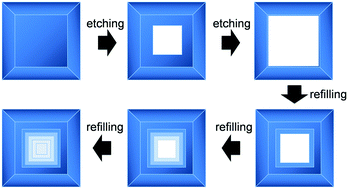Formation mechanism of rectangular-ambulatory-plane TiO2 plates: an insight into the role of hydrofluoric acid†
Abstract
A novel rectangular-ambulatory-plane TiO2 plate with exposed {001} facets was developed for the first time via a facile microwave-assisted hydrothermal approach in the presence of HF solution. Solid evidence demonstrated that HF plays dual roles in the hydrothermal process, both as a stabilizer for the {001} facet growth and as an etching reagent selectively destroying the {001} facets.



 Please wait while we load your content...
Please wait while we load your content...